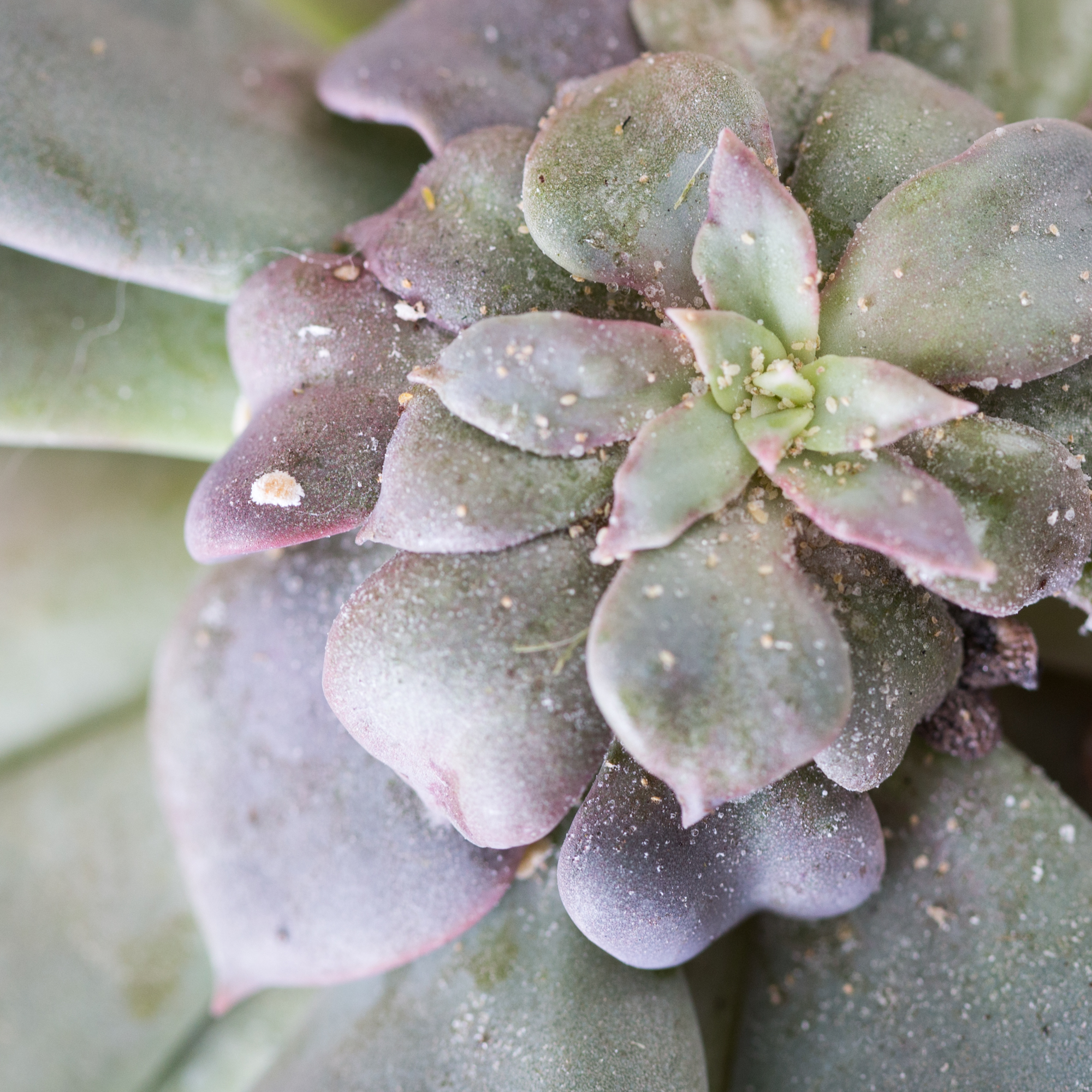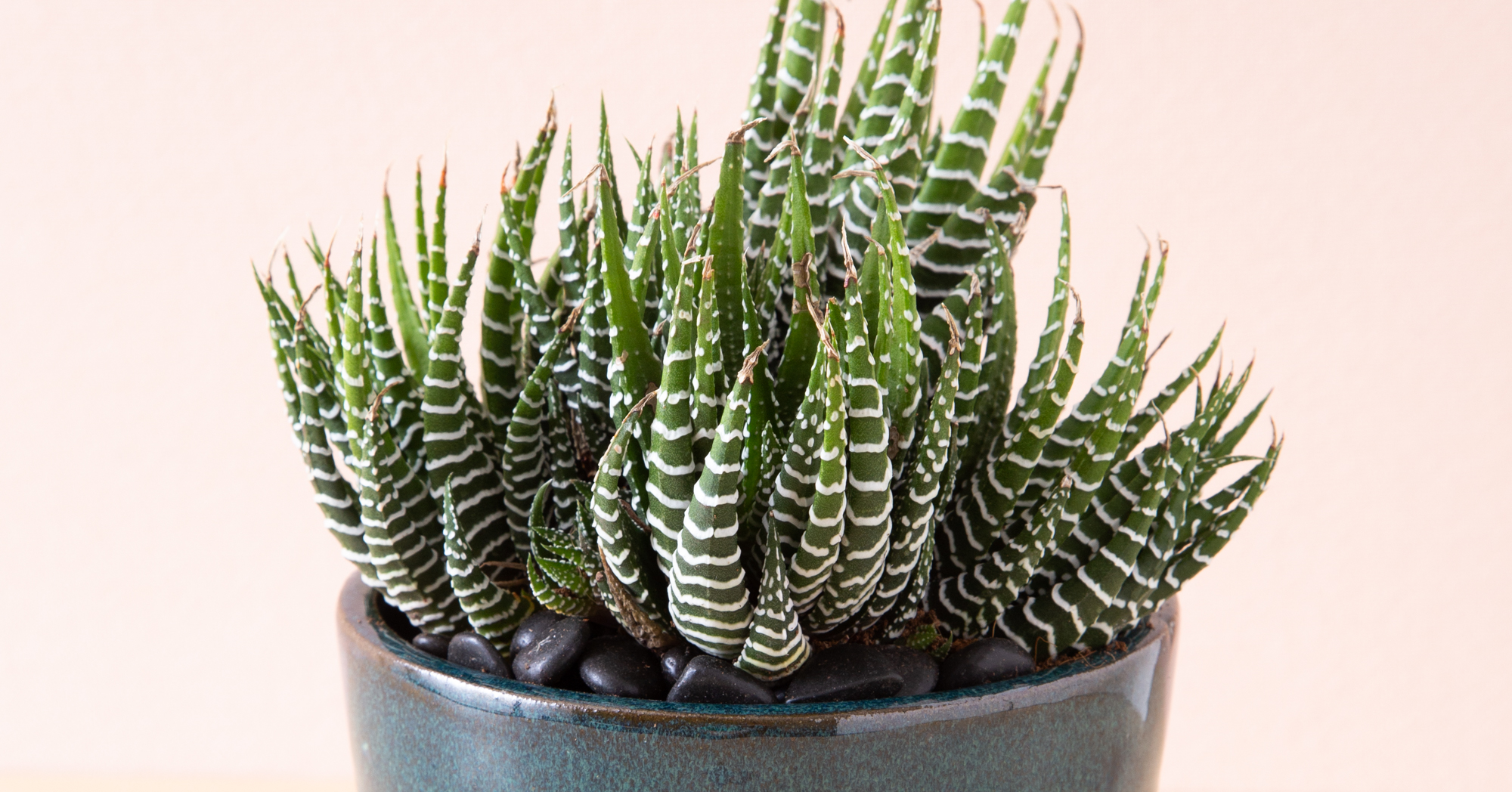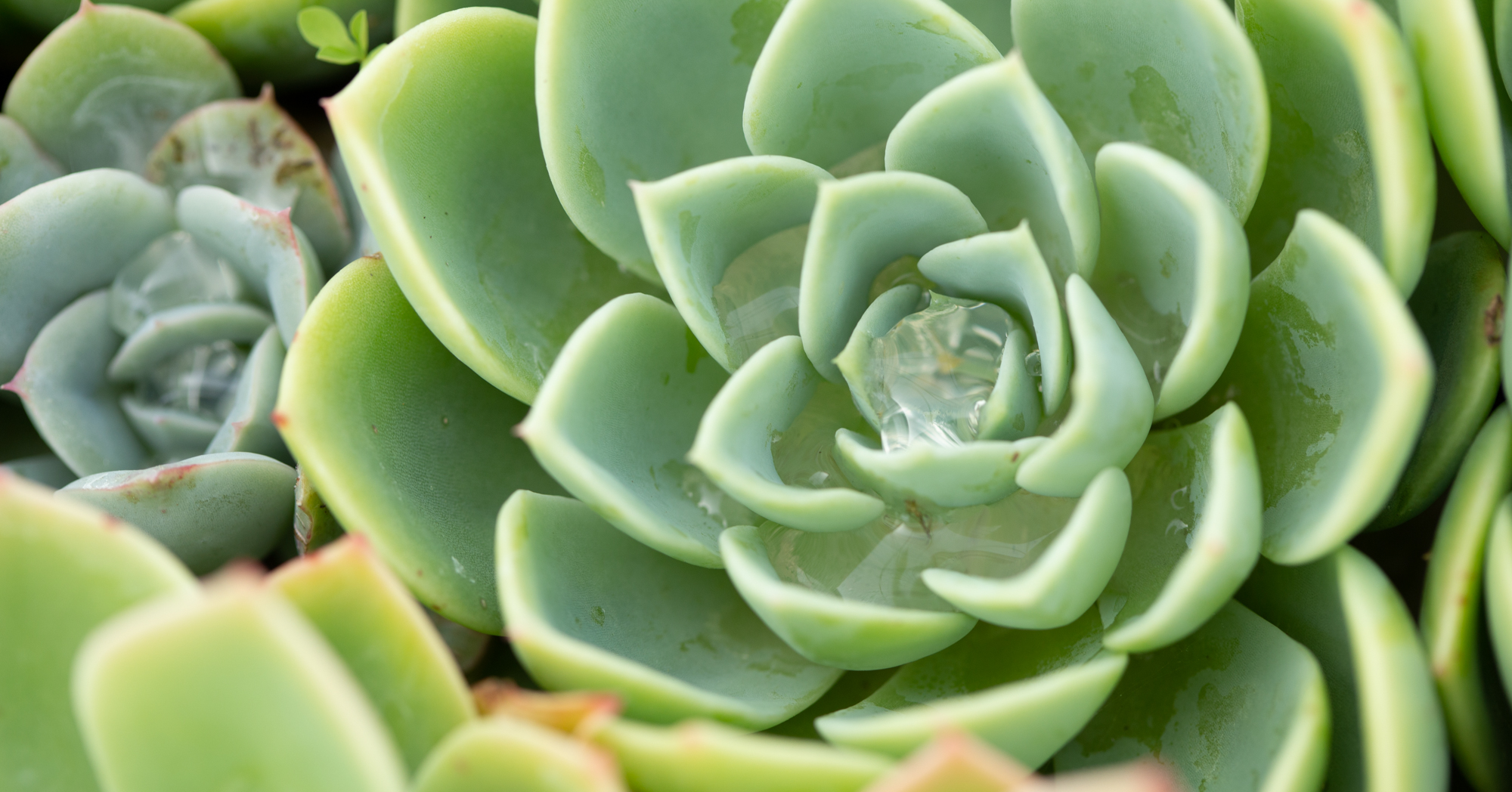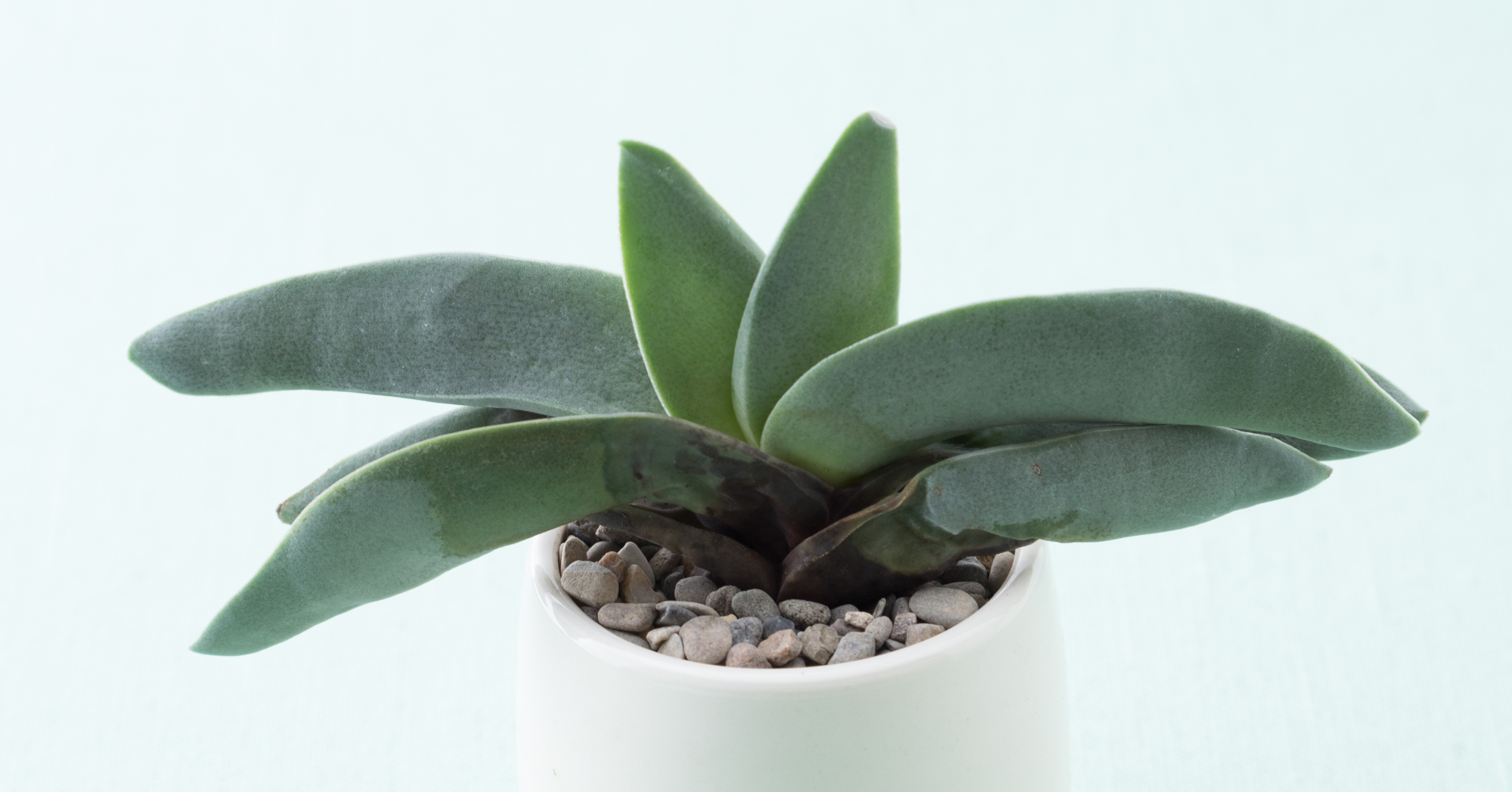This Powdery Puff Isn’t Good For Your Succulents
If you're noticing white build up or powder on your succulents, it could be a few different things. It may mean your succulent needs to be treated, but in other cases your succulent is completely fine.
Mealy Bugs
One of the most common succulent pests is mealybugs. These nasty little guys often look like thick cobwebs between your succulents leaves. They spread quickly so you'll want to isolate and treat your succulents right away if you see them.
Get more details about how to treat mealy bugs here.

Natural Farina and Coating
Some succulents like Echeverias and Kalanchoe lucaie have a naturally occuring waxy build up that helps protect the leaves from sunburn and allows water to run off the leaves more easily.
The farina is really important to your Echeveria staying healthy, so try not to touch or rub the leaves as this can easily remove the farina.
Once removed, it will not grow back on those leaves, though new leaves will have it.
For Kalanchoe luciae, the powdery build up (called "bloom") looks even more problematic and it can sometimes be difficult to tell if it has mealy bugs or not.
However, it is completely natural for this Kalanchoe and shouldn't be removed, just like the farina on Echeveria succulents.
If you're worried it could be mealy bugs, start by using a stream nozzle attachment on your hose (or even a spray bottle) and try to wash off the build up. This won't remove the healthy "bloom" but would help remove any mealy bugs.
Mineral Build Up
If you're using tap water on your succulents, it's likely that overtime you'll notice some mineral build up on your succulents. This seems to happen most with Jade plants and Haworthias.
Jade plants will often get white spots in the "pores" or dimples on their leaves. You can simply wipe it off and the plant will continue to grow as normal. It will not generally harm the plant even if you leave it on.
Haworthias and Haworthiopsis plants will sometimes get a crusty build up of minerals near the base of their rosettes. Sometimes this can turn an orange or yellow over time.
Just like with the Jades, it's not a problem for the Haworthia but you can wipe or brush it off if it becomes unsightly.
Watering with hard water is ok for succulents (I've been doing it for years), but if you find you get a lot of build up you can switch to using filtered or distilled water. I recommend avoiding soft water as the extra salts can cause changes in the soil pH which can be challenging for succulents.
Powdery Mildew
Most succulents won't get powdery mildew, but it is a possibility for some varieties.
Powdery mildew will show up as a white coating on the leaves that gets splotchy and appears in patches.
Usually powdery mildew occurs when the soil stays wet for too long or if water stays on your succulent leaves for a long period of time.
If you do notice signs of powdery mildew it's best to isolate your succulent immediately to prevent it from spreading. You can treat the mildew with isopropyl alcohol or Safer Soap.
What Succulent is Best for You?

There are thousands of succulent varieties and not all of them will grow well in your climate or may require more (or less) work that you want to put in. It's important to know how much light and water your succulent plants need to thrive so you can select the plant that's best suited for you.
Ensure You're Watering Properly

A big part of keeping succulents healthy is providing them with the right environment. You'll want to pay attention to the soil they're in, how much sunlight they're getting, and most importantly, how often you're watering them. The method and frequency of watering succulents are critical to preventing rot while encouraging lots of new growth.
Is Your Succulent Dying? Find Out Why

There's a number of reasons your succulent might not be looking great. Find out how to tell what's wrong with your succulent and how you can fix it or prevent it from happening again.
This article originally appeared on Succulents and Sunshine.